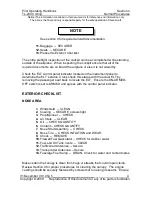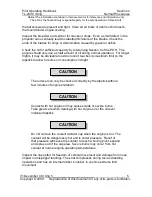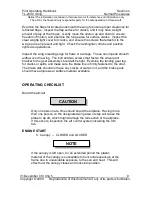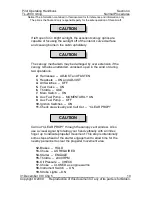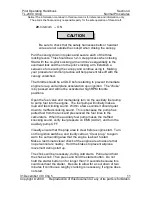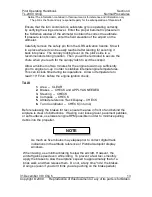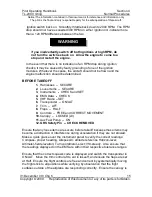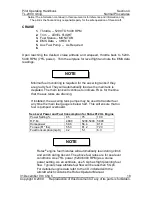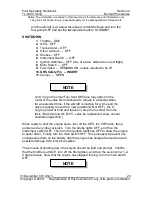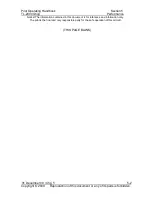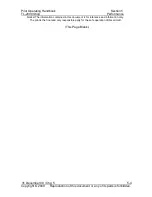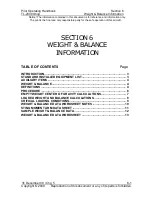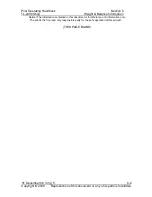
Pilot Operating Handbook
Section 4
TL-2000
Sting
Normal Procedures
Notice! The information contained in this document is for reference and information only.
The pilot is the final and only responsible party for the safe operation of this aircraft.
31 December 09 / Chg 5_____________________________________________17
Copyright © 2009 Reproduction of this document or any of its parts is forbidden.
Accelerate to slightly above normal takeoff speed and rotate the aircraft off the
ground smoothly. As soon as a stabilized climb has been accomplished, the
aircraft should be turned into the wind and a “crab” established to ensure a climb-
out flight path aligned with the runway heading.
SOFT FIELD TAKEOFF
When taxiing over soft ground, keep constant back pressure on the flight stick to
relieve stress on the nose strut. Do not stop on soft ground; if possible, keep the
aircraft moving. Set Half flaps before entering the runway. Maintain elevator
back pressure, and when clear for takeoff, add enough power to just get the
airplane moving. As the airplane steadily accelerates, smoothly add full power.
As airspeed increases, raise the nose wheel off the ground, and when the
airplane becomes airborne, level the nose to remain in ground effect until V
X
is
reached then accelerate to V
y
. When V
y
has been established, continue on a
normal climb-out.
CLIMB
1.
Throttle -- SET TO 5500 RPM (or as required)
2.
Climb -- 75 KIAS
3.
Trim -- ADJUST AS NEEDED
4.
EMS Data - CHECK
5.
Aux Fuel Pump -- ON
When the flaps have been retracted, ease the throttle back to 5500 RPM when
clear of obstacles and continue the climb out at 75 KIAS. Utilize the airplane’s
elevator trim to assist in maintaining proper climb attitude. Make a quick
observation of the EMS data. The EMS caution light will be illuminated to alert
you if a preset limit has been exceeded.
During operation in high ambient air temperatures or extended
climb periods, the climb airspeed should be increased to allow
ample cooling air to enter the engine which will prevent overheating
and coolant loss.
NOTE


